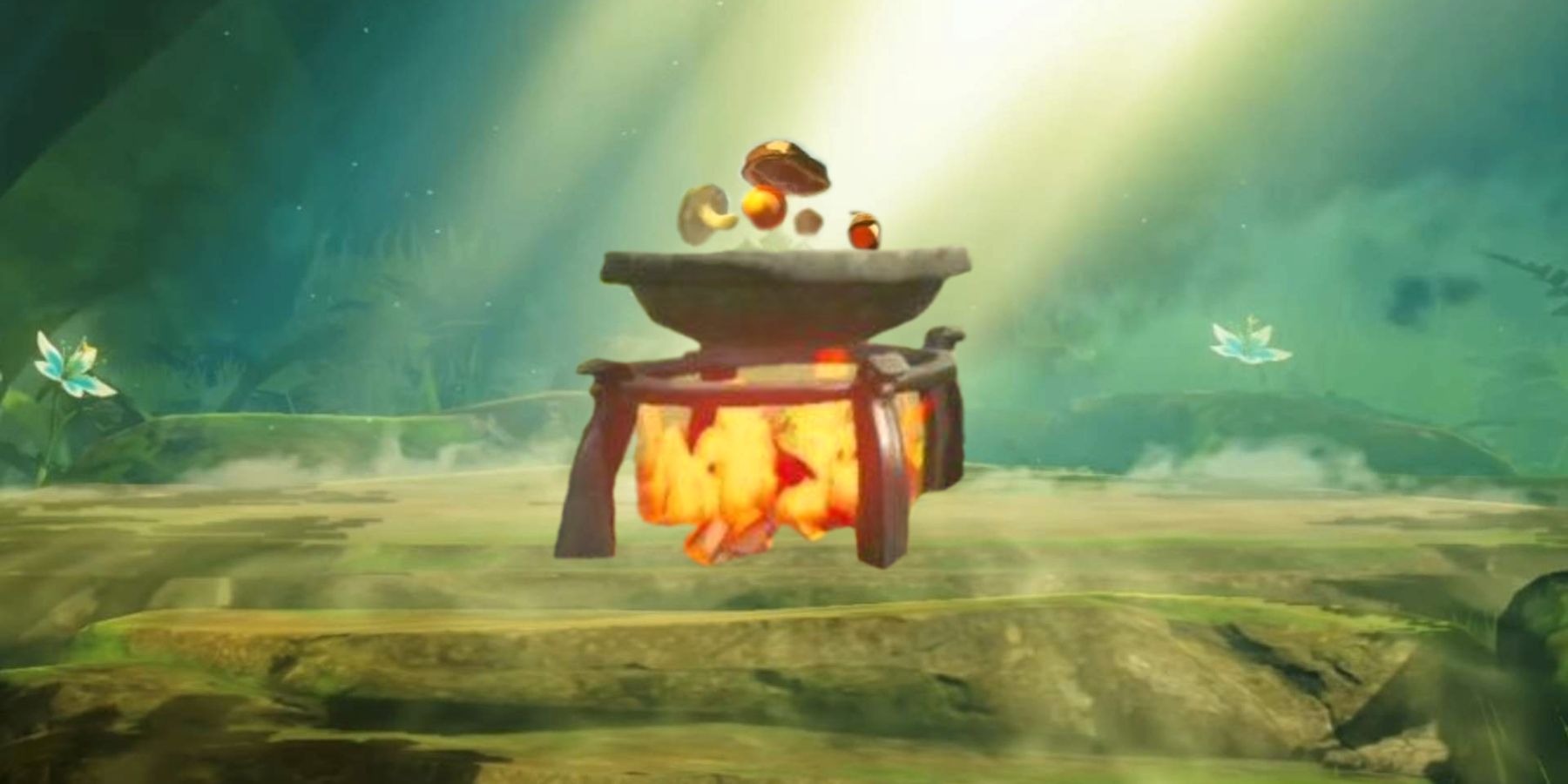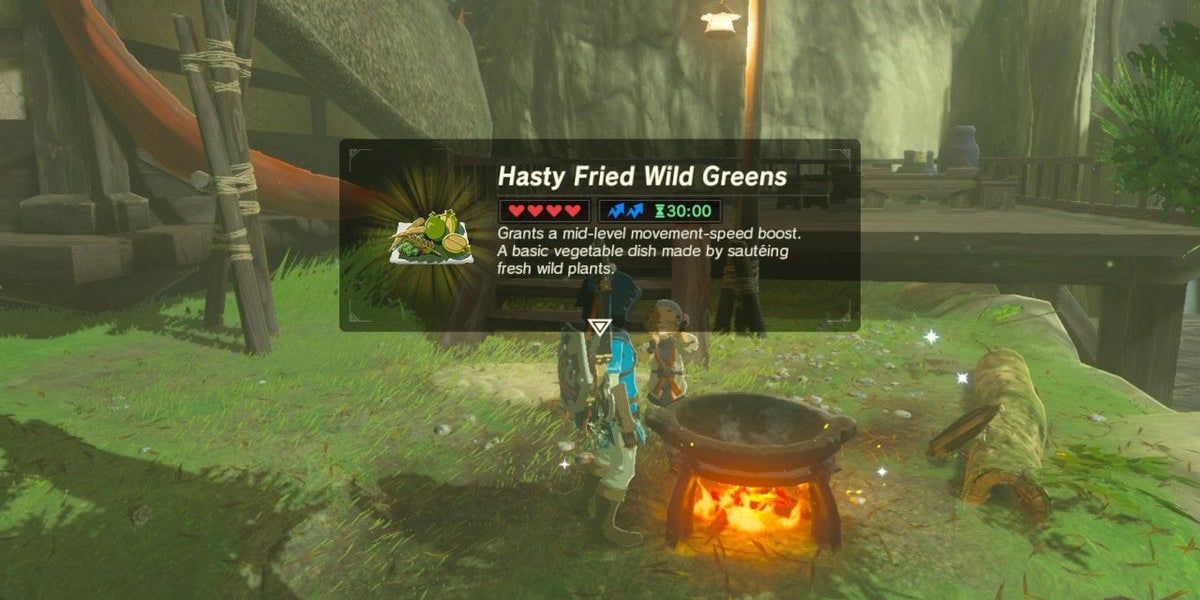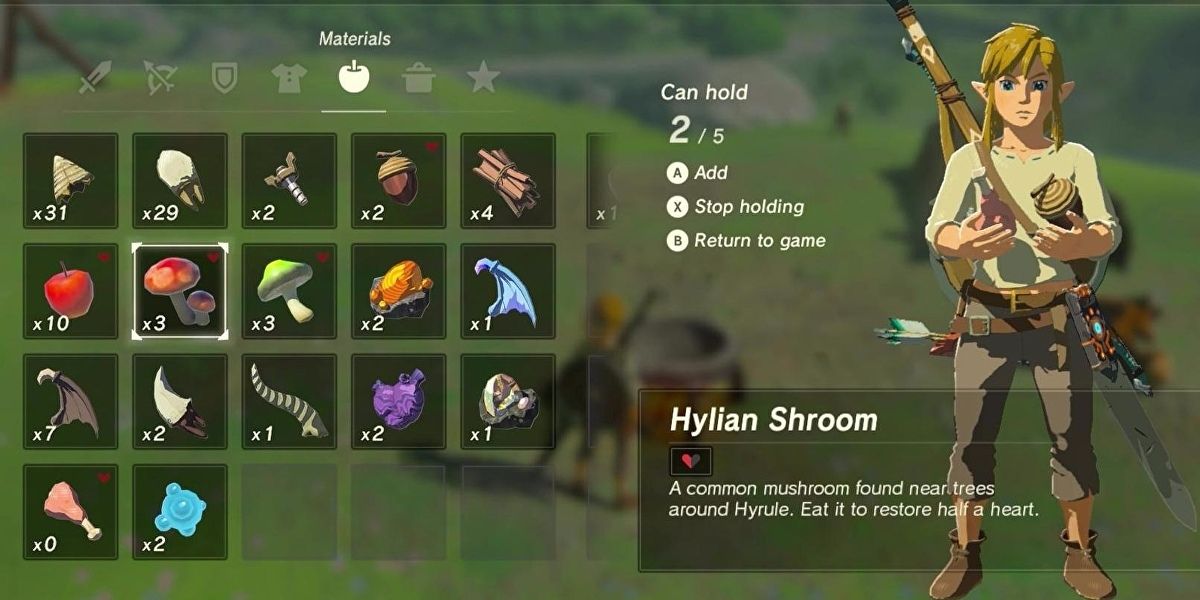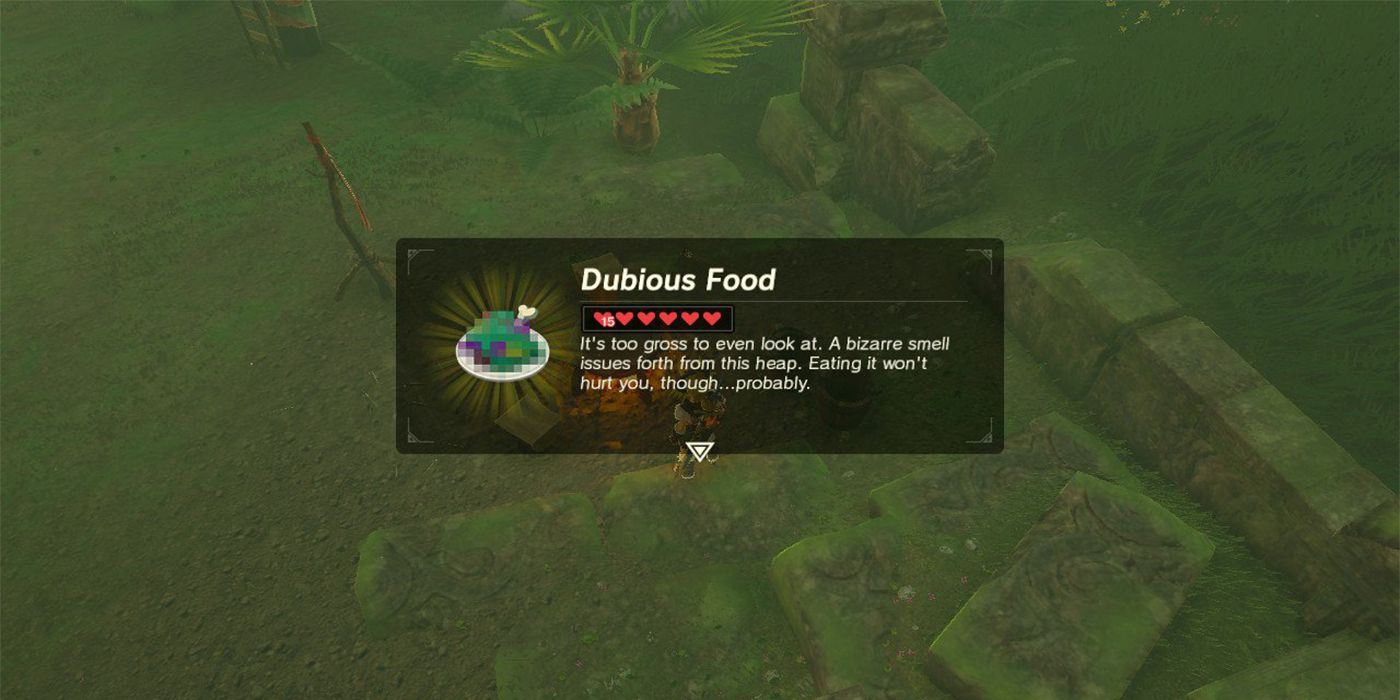The Legend of Zelda: Breath of the Wild is famous for its many different gameplay elements all mashing together to create a unique experience. The game is shockingly deep, both in developer-intended ways and also due to a seemingly endless supply of exploits that are still being discovered. From the various horses players can find to the different armors and weapons that litter Hyrule, there is plenty for a person to sink their teeth into even after the usual exploration and combat loop gets old. Hopefully, Breath of the Wild 2 can follow up on this beloved trait of the original game.
One system stands out among the rest, though not for the reasons a person might think. Cooking is a vitally important part of challenging Breath of the Wild’s harder areas, as it can help Link navigate the environment better and survive longer. It's also fun to experiment with, considering how many dishes can be prepared from the many ingredients Link finds. However, those different dishes are just fancy names and images pasted onto statistics, and it takes more than just a favorite recipe to get the most out of Hyrule's food.
RELATED: Legend of Zelda Breath of the Wild Guide: Every Recipe In The Game
Thanks to research by the Zelda community, it was discovered that cooking is one of the most common systems in Breath of the Wild that isn't well-understood. Ingredients all have set HP values and other potencies that are either multiplied, added up, or substituted into equations used to determine the stats of a resulting dish. For that reason, making a tier list out of Breath of the Wild's meals is a complicated affair, as players can simply bolster every dish with higher-grade ingredients. To that end, it's easier to rate certain types of food based on their effects, rather than what each meal does individually.
S Tier: Inhuman Cooking

While individual ingredients wouldn’t normally rate on a list of Breath of the Wild’s best food, there are some that automatically make any dish better - though they take a lot longer to get. These are star fragments, dragon scales, dragon claws, dragon fangs, and dragon horns. These celestial ingredients add hefty amounts of time to the duration of buffs (up to thirty minutes from a dragon horn) and guarantee a random critical cooking effect on top of that. Dragon parts aren’t that hard to farm once a given dragon’s route is nailed down and a bonfire is set up near it, so players looking to push their gains beyond the mortal realm should scrounge for these.
RELATED: Potential Zelda: Breath of the Wild 2 Elements That Could Return from Skyward Sword
A Tier: Powerful Cooking

More easily obtained is Monster Extract, which can be bought from Kilton’s Fang and Bone vendor at a low price. These act as spices and will turn any dish into a monstrous version of itself. These dishes cannot benefit from critical cooking, but will have a random extra effect. These can enhance or weaken almost any food attribute in the game, including raising or lowering a buff level, and can even set the duration to ten or thirty minutes. If such powerful buffs aren’t needed urgently, it can be fun to throw extra ingredients into a pot with Monster Extract to see what happens. If proper cooking procedures are followed, it can’t be much worse than whatever a player is aiming for.
If consistency is desired, it’s the Mighty, Hearty, and Enduring foods that should be crafted. These increase attack, temporary max health, and temporary max stamina, respectively. Mighty and Hearty ingredients are fairly easy to find, and the simple act of combining four of the Mighty Bananas looted from the Yiga Hideout will yield an impressive level three attack buff conferring 150 percent damage. Throw in a dragon horn to achieve unbelievable levels of power.
Hearty and Enduring stand apart from other food alongside Energizing dishes. They are the only food types that gradually increase in effect based on their invisible potency scores instead of building up one-to-three tiers of effectiveness. With the potential for up to 25 extra hearts and two spare stamina wheels on top of guaranteed full health and stamina restores, dishes using these ingredients will help players survive against Ganon’s most powerful minions.
B Tier: Helpful Cooking

The other three basic stat buffs round out the middle of the list. Tough dishes increase Link’s defense, though they pale in comparison to the miraculous healing properties of Hearty food. Sneaky meals reduce monsters and wildlife’s awareness of Link, meanwhile Hasty ones increase his movement speed while running, climbing, and swimming. These are all situationally useful, but can definitely make exploring Hyrule a lot more convenient if used at the right time.
Also of note are basic ingredients and meals focused on restoring health. Hearty dishes are more useful and provide lasting benefits, but just about any player can speak to roasting food before picking it up, and then shoving it down Link’s gullet for a quick but value-saving heal during tough fights. Combining these materials into basic dishes, and perhaps enhancing their restoration even further with a Fairy, can make for some useful (and mouth-watering) food.
C Tier: Situational Cooking

While food usually needs to be applied situationally for maximum effect, there are some meals that can only cut it in certain areas. These dishes include Electro, Spicy, and Chilly food items, as well as Fireproof Elixirs, which all provide some resistance to elements. Electro comes out ahead by giving Link more resistance to electrical damage, but is only useful in certain parts of the Gerudo and Lanayru regions and can be rendered obsolete by the upgraded Rubber set. The same can be said for Spicy and Chilly foods, which provide additional heating and cooling, respectively, that keep Link from taking damage in certain regions. Players are better off finding armor sets that will permanently solve such environmental issues, and that goes double for the Eldin Region’s swiftly replaced Fireproof Elixirs.
Energizing dishes also deserve a mention. These restore various amounts of stamina, potentially up to three wheels-worth if optimally cooked. While these can be good for extending long sessions of swimming, climbing, and gliding, they simply aren’t as useful as Enduring food. Out of all the things affected by food buffs, stamina is the only one that naturally regenerates.
D Tier: Disastrous Cooking

There is no detrimental food in Breath of the Wild, but players certainly won’t feel good about feeding some things to Link. Dubious Food is the result of any invalid cooking recipe, aside from ones that include wood or ore. Rock-Hard Food is the result of that, and it will only ever restore one-quarter of a heart. At least Dubious Food has the courtesy of healing more based on the strength of the ingredients used. These are cooking dead ends, and can’t even be modified by burning them for a little extra healing. Keep them in a back pocket for emergencies, but don’t feel bad about ditching them either.
The Legend of Zelda: Breath of the Wild is available now for the Nintendo Switch.

